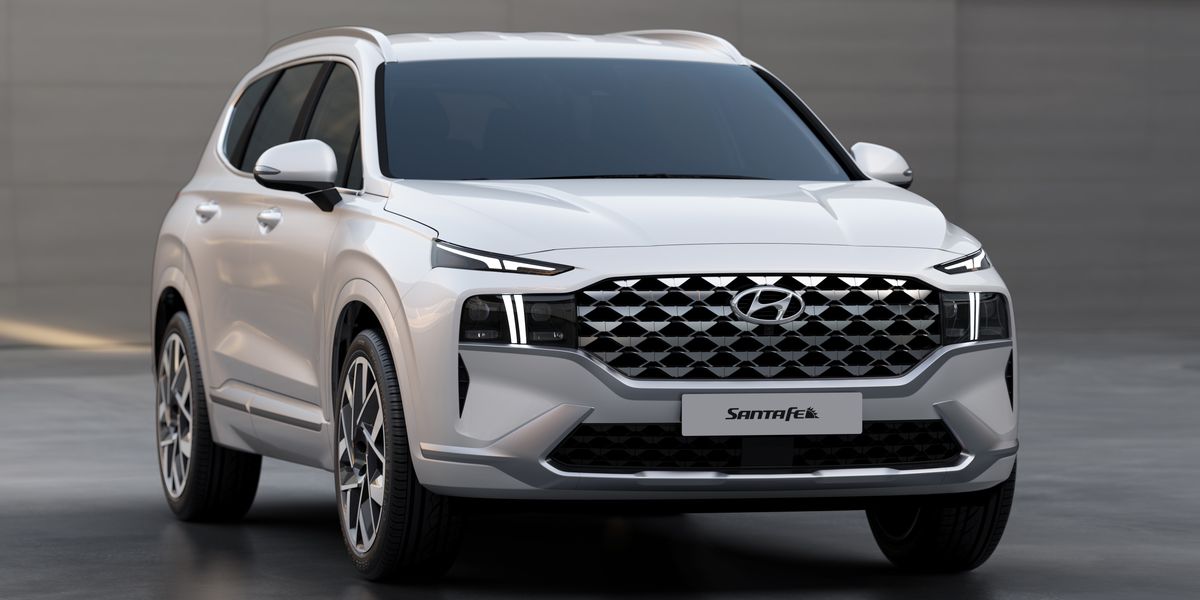
Overview
Good looking and practical with a slightly upscale vibe, the 2021 Hyundai Santa Fe offers families a roomy cabin, desirable features, and plenty of curb appeal. Buyers can choose from a pair of four-cylinder engines—one a turbocharged 2.0-liter—and front- or all-wheel drive. But in any configuration, the Santa Fe is largely satisfying to drive and delivers decent fuel economy. Those interested in safety features will be happy to know that Hyundai offers a host of driver-assistance technologies as standard; the same goes for those after the latest in infotainment tech, which the Santa Fe offers a good deal of. Add to all this Hyundai’s unbeatable warranty, a pleasant and controlled ride, and a more striking exterior design for 2021, and the Santa Fe looks mighty enticing.
What’s New for 2021?
The Santa Fe receives a visual freshening for 2021 that includes bolder front-end styling and improvements to its interior. We expect the reworked model to go on sale by the end of 2020.
Pricing and Which One to Buy
- SE: $ 27,000 (est)
- SEL: $ 29,000 (est)
- Limited: $ 37,000 (est)
Hyundai hasn’t released pricing for the 2021 Santa Fe yet, but it’s likely that the mid-range SEL will remain our pick of the lineup. Its sub-$ 30,000 price tag puts it in reach of a broader range of buyers but it still offers plenty of features that the modern family will find desirable, such as heated front seats, blind-spot monitoring, heated exterior mirrors, SiriusXM satellite radio, and passive keyless entry with push-button start.
Engine, Transmission, and Performance
The 2021 Santa Fe will likely be powered by the same powertrains as the 2020 model, which means a standard 185-hp 2.4-liter four-cylinder engine or a gutsier 235-hp turbocharged 2.0-liter. Both pair with an unobtrusive eight-speed automatic transmission and standard front- or optional all-wheel drive. In our acceleration tests, however, neither engine was particularly quick. They supplied sufficient thrust around town and on the highway and never rose above a dull roar when we flattened the gas pedal. The Santa Fe was also relaxed and stable during everyday duties, with just enough agility and steering feedback to satisfy those who enjoy driving. Those who want more excitement should see the Chevy Blazer or Honda Passport.
Fuel Economy and Real-World MPG
No matter which four-cylinder engine is motivating the Santa Fe, the EPA estimates the mid-size SUV will earn between 20 and 22 mpg in the city and 26 and 29 mpg on the highway. Likewise, models with all-wheel drive are less efficient than their front-drive counterparts. We put both powertrains to the test on our 200-mile highway fuel-economy route and observed 29 mpg from the base engine and 27 mpg from the turbocharged version.
Interior, Comfort, and Cargo
Hyundai interiors are better known for their solid build quality and worthwhile features rather than edgy designs and upscale materials. Still, the Santa Fe has an attractive cabin that offers a variety of contemporary options that include a digital gauge cluster, head-up display, heated rear seats, ventilated front seats, and more. The 2021 model receives slight tweaks to the interior design that align it more closely with the larger and more luxurious Palisade SUV. Its most impressive attribute is generous passenger space in both rows that are a boon on long road trips. The Santa Fe also has ample cargo space behind the back seat where we stuffed 15 carry-on bags and an additional 18 with the rear seat folded flat.
Infotainment and Connectivity
Outfitted with a dashboard-topping 10.3-inch touchscreen that includes user-friendly controls and desirable features, every Santa Fe delivers a pleasant infotainment experience. It serves up standard Apple CarPlay and Android Auto as well as optional wireless charging and a 630-watt, 12-speaker audio system.
Safety and Driver-Assistance Features
The Santa Fe earned a five-star rating from the National Highway Traffic Safety Administration (NHTSA), and it was named a Top Safety Pick+ by the Insurance Institute for Highway Safety (IIHS). The mid-size SUV also has a ton of standard driver-assistance technology. Key safety features include:
- Standard forward-collision warning and automated emergency braking
- Standard adaptive cruise control with stop-and-go technology
- Standard lane-departure warning and lane-keeping assist
Warranty and Maintenance Coverage
Hyundai has one of the best warranty plans on the market that’s highlighted by a lengthy powertrain coverage. The company also now offers complimentary scheduled maintenance that bests mainstream rivals such as Toyota.
- Limited warranty covers 5 years or 60,000 miles
- Powertrain warranty covers 10 years or 100,000 miles
- Complimentary maintenance covers 3 years or 36,000 miles

